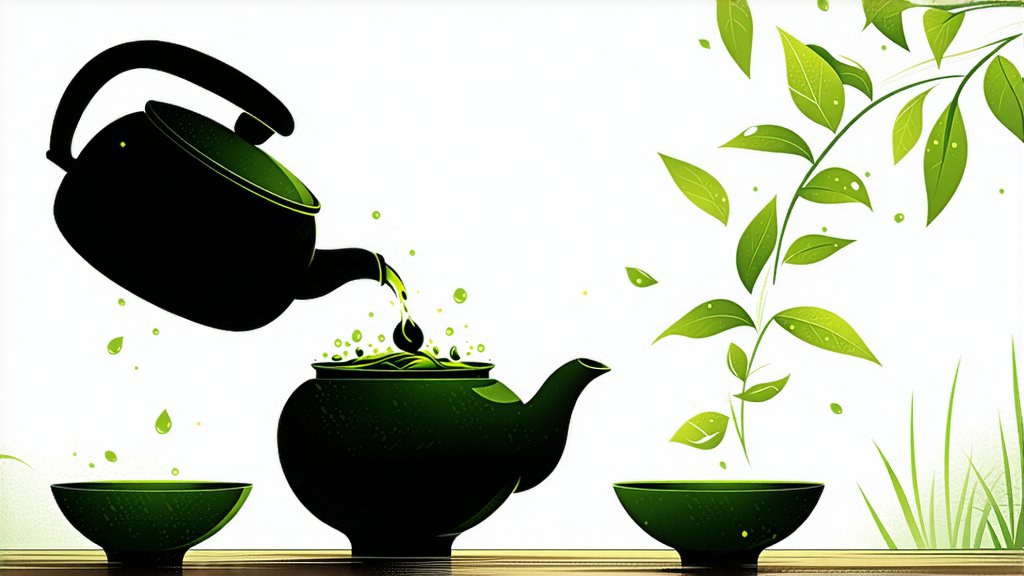
Longjing Tea, also known as Dragon Well Tea, is one of the most prestigious and revered green teas in China, with a history that dates back to the Tang Dynasty. This exquisite tea hails from the West Lake region in Hangzhou, Zhejiang province, and is celebrated for its unique flat leaf shape, vibrant green color, and rich, refreshing flavor.
History and Origins
The story of Longjing Tea is deeply intertwined with the cultural and historical tapestry of China. Legend has it that the tea was first discovered by a monk living in a temple near the West Lake. The monk, after a long journey, was so exhausted that he fell asleep under a tree. In his dream, a dragon descended from the heavens and told him to plant tea seeds in the area. Upon waking, the monk found tea seeds in his hand and planted them, which eventually grew into the tea bushes that produced the Longjing Tea we know today.
Over the centuries, Longjing Tea has been a favorite among emperors and scholars, and its production has been closely guarded as a state secret. It was only in the 20th century that the techniques for producing Longjing Tea were shared more widely, allowing for its cultivation and appreciation beyond the imperial courts.
Varieties and Characteristics
Longjing Tea is categorized into several grades, each with its own distinct characteristics. The highest grade, known as "Tianmu Longjing" or "Heavenly Eyebrow," is characterized by its flat, smooth leaves that resemble the shape of an eyebrow. Other grades include "Xi Hu Longjing," "Wu Long," and "Mei Jia Wu Long," each with subtle differences in leaf shape, size, and aroma.
The leaves of Longjing Tea are typically small and flat, with a vibrant green color that is maintained through careful processing. The tea is known for its "four绝" or "four excellences": the color, aroma, taste, and shape. The color is a bright green, the aroma is fresh and floral, the taste is sweet and slightly astringent, and the shape is flat and smooth.
Craftsmanship and Processing
The production of Longjing Tea is a labor-intensive process that requires great skill and precision. The tea is harvested by hand, usually in the spring, when the leaves are at their most tender and flavorful. The leaves are picked in the early morning when they are covered in dew, which is believed to enhance their flavor.
The processing of Longjing Tea involves several steps, including wilting, pan-firing, rolling, and drying. The wilting process involves spreading the fresh leaves out to lose some of their moisture, which helps to soften them and prepare them for the next steps. Pan-firing is a crucial step in which the leaves are heated in a wok over a low flame. The leaves are continuously tossed and moved to ensure even heating and to prevent burning. This process helps to stop the oxidation of the leaves, which is what gives green tea its characteristic color and flavor.
After pan-firing, the leaves are rolled to shape them into their distinctive flat form. This step also helps to release the oils and aromas from the leaves, enhancing the tea's flavor. Finally, the leaves are dried to remove any remaining moisture, which helps to preserve the tea and maintain its quality.
Tasting and Appreciation
The art of tasting Longjing Tea is an integral part of the Chinese tea culture. To fully appreciate the nuances of Longjing Tea, it is essential to follow the proper tea ceremony. This involves using a traditional Chinese teapot or gaiwan, which allows the leaves to unfurl and release their flavors.
The tea is brewed at a temperature of around 75-85°C (167-185°F) to prevent over-extraction and bitterness. The first infusion, known as the "washing of the tea," is poured over the leaves and then immediately drained. This step is believed to remove any dust or impurities and唤醒 the tea's aroma.
The subsequent infusions are then steeped for a longer period, allowing the tea to fully release its flavors. The color of the brewed tea should be a bright, clear green, and the aroma should be fresh and floral. The taste is smooth and slightly sweet, with a hint of astringency that lingers on the palate.
Longjing Tea is often enjoyed in small, delicate cups, which allows the drinker to appreciate the tea's aroma and flavor fully. The tea leaves can be infused multiple times, with each infusion revealing different aspects of the tea's character.